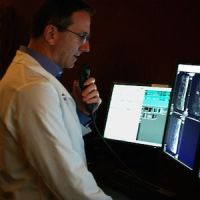Key principles of aviation safety – including “big picture” tactical training, the use of checklists, and teamwork – could be adapted to meet the challenges facing the practice of radiology, according to an article in Journal of the American College of Radiology. "Although there are differences in our professions, by adopting proven techniques from our most elite aviators, we can address some of the key challenges of radiology’s future," author Dr. Elliot Rinzler, Department of Radiology, Eastern Virginia Medical School in Norfolk, writes.
See Also: Mentorship - Key to Ensuring the Future of Radiology
Healthcare has already adopted important principles from aviation. For years airline consultants have taught safety and error prevention techniques lauded in the landmark 1999 Institute of Medicine (IOM) report "To Err Is Human". These lessons have evolved to include principles of teamwork, communication, and the value of simulation training.
Tactical Training
Fighter pilots undergo training cycles with gradually increasing responsibility, focusing on tactics and strategy. They learn to not just execute but plan missions. What distinguishes an experienced commander from a junior pilot is the ability to understand tactical objectives and synthesise data within the larger context of the mission.
"Like pilots, one factor separating an experienced radiologist from a new resident is the ability to place imaging findings within the larger context of patient care. Maintaining technical proficiency, though essential, is not enough...To lead in our field, we must train to think tactically," says Dr. Rinzler, who used to be a flight surgeon in the U.S. Air Force.
Teamwork
Even in a single-seat jet, no fighter pilot is alone, the author points out. Because mission completion is paramount, should an individual fail in his or her objectives, those responsibilities will immediately shift to the wingman or wingwoman. Individual responsibilities are clearly delineated, and alternating these duties ensures a seamless transition when contingencies arise.
Radiology requires similar collaboration. Administrative staff members, technologists, physicists, and others all contribute to quality patient care. Peer support is increasingly important; as technology evolves, it has become impossible for one individual to master the entire spectrum of imaging examinations.
Checklists
In aviation, checklists serve as guidelines for standard operating procedure and a source of documentation. Their utility ranges from routine reminders to catastrophic contingencies such as in-flight engine failure. Checklists are even used for the most mundane of tasks, so that once a best practice is identified, it will endure independent of the individual performing it.
Checklists are already in use throughout medicine. They are used for infection control and patient safety and are a common tool in interventional radiology. Checklists improve both patient safety and workplace efficiency. Tasks that could benefit from their implementation include: fluoroscopy dose reduction, contrast reaction management, CT protocol selection, and MRI safety.
In conclusion, the author notes that radiology is in an era of change and the move towards value-based care and adoption of new methodologies will require a cultural shift. "Cultural change is necessary to address future challenges; this must begin in residency and be directed by our leadership," Dr. Rinzler writes.
Source: Journal of the American College of Radiology
References:
Rinzler, Elliot. (2016) What Radiologists Can Learn from Fighter Pilots. Journal of the American College of Radiology; doi.org/10.1016/j.jacr.2016.12.007
Latest Articles
Radiology, teamwork, Checklists, big picture tactical training, aviation safety
Key principles of aviation safety – including “big picture” tactical training, the use of checklists, and teamwork – could be adapted to meet the challenges facing the practice of radiology, according to an article in Journal of the American College of Ra



























